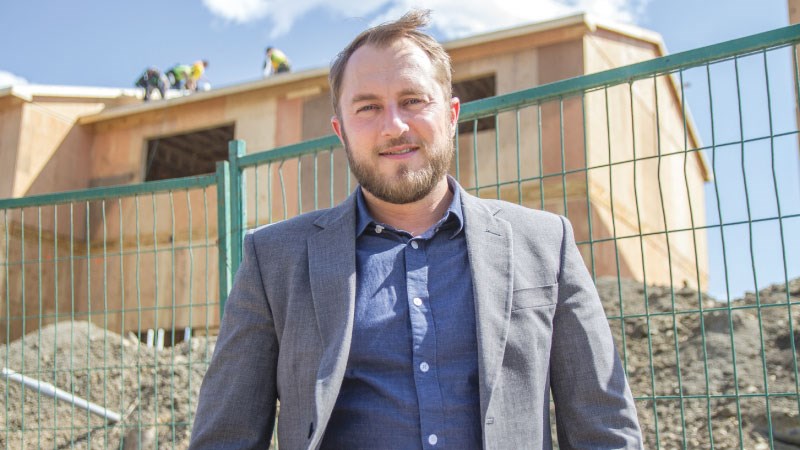Fort McMurray has made a remarkable recovery since a wildfire ravaged the northern Alberta community a year ago but there’s still a long road ahead.
The charred buildings and burnt-out homes that were broadcast across the country last May have been bulldozed away, more than $3.5 billion worth of insurance claims have been filed and millions of dollars have been spent replacing damaged infrastructure such as water systems and sidewalks.
It’s expected to take another three to five years until “Fort Mac” has been rebuilt to pre-fire levels, but it could take far longer for the psychological damage to heal.
More than $145 million in public money has already been spent on disaster recovery, according to Erin O’Neill, operations manager with the recovery task force of the Regional Municipality of Wood Buffalo, and that’s just the beginning.
Millions more is being allocated to help rebuild more than 60 private properties that were damaged by fire or by water bombers.
“If you have insurance but your insurance isn’t bringing you back to the pre-fire state, our Firebreak program will bring you back to that. Some people didn’t have any insurance so it will cover the cost of the rebuild. We’re not sure where those numbers are going to end up,” O’Neill said.
The municipality is also doing its part to spur private redevelopment, waiving all permitting fees.
In total, 1,595 structures were lost during the blaze, for a total of 2,597 housing units, and development permits have since been issued for 657 replacement units.
While a number of local home-based businesses were impacted, aside from a car wash, no major commercial buildings were lost in the fire.
The fire, however, paralyzed Fort McMurray’s commercial sector until the middle of last September, as many oilsands companies were forced to relocate displaced workers to other urban centres so they could keep servicing their clients.
“You didn’t know how many of your employees were coming back until school started,” said Ken Williamson, senior-vice president at Colliers International in Fort McMurray. “We had a hard time signing leases until September. We were waiting to see what the new normal was going to look like.”
In January and February, Williamson’s phone started to ring again as contractors working on the rebuild suddenly needed space to hang their hard hats.
It had been several years since the local commercial market experienced any good news. Things started to dip in 2014 as oil companies cut back their discretionary spending as oil prices plunged. Prices have started to recover in recent months, so at least some of that spending is picking up again.
“[Oil companies have] a workforce that is more stable now and housing prices are more affordable,” he said.
Williamson said he has spoken to two landlords who have offered “great” discounts to tenants who sign early renewals for five-year leases.
The community has always been underserved on the retail side but Williamson said some of the shortfall will be made up with a 125,000-square-foot multi-phase development in the Eagle Ridge neighbourhood with Landmark Cinemas as the anchor tenant. Restaurants and other retailers are expected to flock to the area to serve moviegoers.
“When we see that kind of money pouring into a community, it’s a great vote of confidence. When somebody drops $40 million or $50 million into a development, that’s a big deal,” Williamson said.
Fort McMurray’s housing market picked up virtually immediately after residents were allowed to return a month after the fire started. Andrew Weir, president of the Fort McMurray Real Estate Board, said it experienced another surge this spring.
“There was a spike in demand [right afterwards] to buy over fear that we were going to end up in a [housing] shortage,” he said.
“Prices are really attractive. I think people are thinking they might not see this kind of opportunity again if [the price of] oil turns around. A lot of people are trying to buy while the prices are still down,” he said.
The average price of a single-family detached home in Fort Mac in March was $575,069, down from $670,474 a year earlier. The number of properties sold more than doubled over the same period, from 21 in March 2016 to 45 just 12 months later.
Weir attributes at least some of the data to the fact that many homes being sold today are going to first-time buyers.
“They tend to focus on starter homes. That’s the buyer profile we’re seeing now. The market and the prices are much the same as they were pre-fire.”
Single-family homes are in high rental demand as thousands of people are still living in temporary residences. Jessie Wyatt, a property manager at Coldwell Banker, said many people continue to look for rental properties while they build and rebuild permanent ones.
“This is still a family community. The people who live here are here because they want to be here. They need accommodation while they rebuild their homes and their lives,” she said.
Perhaps surprisingly, rental rates are not shooting to the moon. Wyatt said current rates are very similar to pre-fire ones.
“It’s not the price gouging that people would think. It’s not a matter of rent going up, it’s that the amount of people looking has increased,” she said.
The demand for rentals began shortly after the evacuation when residents were able to confirm that their homes were lost. Wyatt and her colleagues were immediately inundated with rental requests.
“We were working 18-hour days,” she said.
Despite all the construction activity, Wyatt doesn’t believe Fort McMurray will ever regain its innocence.
“We’ll never have that security. That feeling is never going to be there. People will never be able to get those photo albums back. Our new normal will be once everybody finds their peace, has rebuilt or sold and moved on,” she said. “ Who knows how long that will take?”



